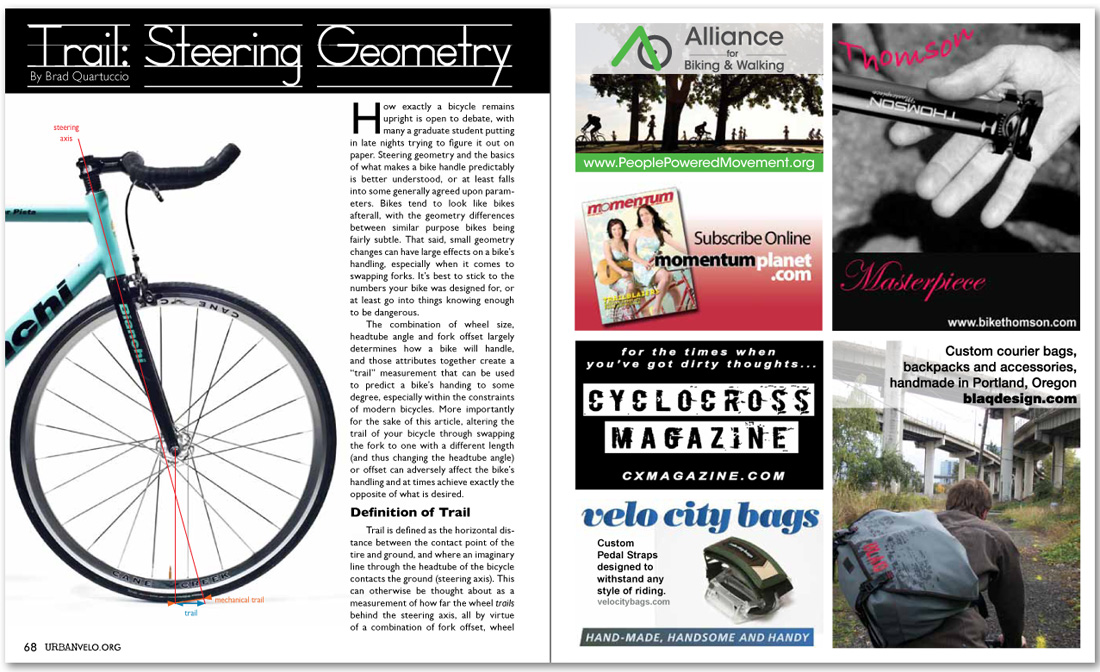


Trail: Steering Geometry
By Brad Quartuccio
How exactly a bicycle remains upright is open to debate, with many a graduate student putting in late nights trying to figure it out on paper. Steering geometry and the basics of what makes a bike handle predictably is better understood, or at least falls into some generally agreed upon parameters. Bikes tend to look like bikes afterall, with the geometry differences between similar purpose bikes being fairly subtle. That said, small geometry changes can have large effects on a bike’s handling, especially when it comes to swapping forks. It’s best to stick to the numbers your bike was designed for, or at least go into things knowing enough to be dangerous.
The combination of wheel size, headtube angle and fork offset largely determines how a bike will handle, and those attributes together create a “trail” measurement that can be used to predict a bike’s handing to some degree, especially within the constraints of modern bicycles. More importantly for the sake of this article, altering the trail of your bicycle through swapping the fork to one with a different length (and thus changing the headtube angle) or offset can adversely affect the bike’s handling and at times achieve exactly the opposite of what is desired.
Definition of Trail
Trail is defined as the horizontal distance between the contact point of the tire and ground, and where an imaginary line through the headtube of the bicycle contacts the ground (steering axis). This can otherwise be thought about as a measurement of how far the wheel trails behind the steering axis, all by virtue of a combination of fork offset, wheel